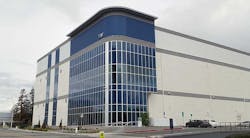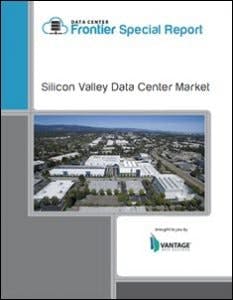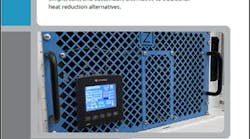We continue our series of stories on the leading geographic markets for data center space with a report on the Silicon Valley Data Center Market. Data Center Frontier is partnering with DatacenterHawk to provide in-depth market reports on each city we profile. This entry dissects trends in Silicon Valley data center market demand and supply.
Download the full report.
Trends in Demand
Silicon Valley is a market of markets, with strong activity in both retail colocation and wholesale data center space. Tenants use data center space for a variety of purposes, including corporate IT, research labs and high-performance computing, as well as cloud deployments.
Over the past several years, the limited supply of new wholesale space in Silicon Valley has meant strong leasing and pre-leasing activity. The most recent affirmation of this came in April, when CoreSite executed pre-leasing of Phases 1 and 2 at its SV8 project, representing 108,000 square feet of space.
Vantage Data Centers has also seen strong leasing and pre-leasing as it has new space to market in recent years. Vantage filled the available capacity at its V6 facility within months of opening to new customers. Vantage has also pre-leased the first building at its second campus in Santa Clara, which is scheduled for delivery in the third quarter of 2019. The building will include 21 MW.
The lead time for procuring a site and building space in Santa Clara is an important factor for cloud players, who seek to deploy capacity in 6 to 9 months in other markets.
The early success for Vantage and CoreSite is consistent with recent trends in Santa Clara, which has historically seen significant pre-leasing, with customers reserving space while a facility is still under construction.
Will that trend hold true as additional new inventory becomes available from multiple new projects, several of which hope to deliver in late 2019? The lead time for procuring a site and building space in Santa Clara is an important factor for cloud players, who seek to deploy capacity in 6 to 9 months in other markets. This could prompt early commitments from customers with short-term requirements.
Looking beyond cloud, what are the other demand drivers? Growing adoption of artificial intelligence is driving more demand for high-density computing.
“Variable resiliency” space, which support high-density workloads with a non-redundant (N) power configuration, is a requirement expected to be an ongoing component of the region’s data center demand profile.
These high-density workloads are driven by the growing use of GPUs and FPGAs, which use more power than traditional CPUs, and are becoming common in AI computing infrastructures. The ability to support these rising densities will be an important factor in data center design going forward, especially in Silicon Valley.
Many retail colo customers, including content companies and social media providers, seek interconnections and network-rich data center ecosystems. Equinix is the leading player in this niche, and operates seven data centers in Silicon Valley, including a large data center campus in South San Jose. Digital Realty’s Telx unit also offers interconnection services from multiple facilities in the region.
Many companies are seeking to move server rooms and technology labs out of their headquarters, as the recent hiring boom has led to a shortage of office space on corporate campuses.
This has created several types of opportunities for data centers providers. There have been multi-MW deals with lab tenants for “variable resiliency” space, which support high-density workloads with a non-redundant (N) power configuration. These requirements are expected to be an ongoing component of the region’s data center demand profile.
Trends in Supply
As of the first quarter of 2019, there was 42 MW of capacity available in Silicon Valley, with another 9 MW under construction, according to datacenterHawk. The available capacity is up from just 25 MW in 2Q 2018, and includes a mix of wholesale data center capacity and smaller pockets of retail colocation space. Pre-leased capacity—including Vantage CA21—is categorized as commissioned power.
The vacancy rate for available space in the region has remained low, but trended slightly higher in recent quarters as new inventory has become available, as seen in the chart above from datacenterHawk.
That strong demand has paved the way for new construction, with Vantage Data Centers, Equinix and Digital Realty all expanding their data center footprints in Silicon Valley.
Here’s a look at the inventory in the pipeline:
- Vantage Data Centers is building a new campus on Mathew Street in Santa Clara, where it plans to create 69 MW of new data center capacity. The first phase of 21 MW is schedule to be delivered in the third quarter of 2019.
- CoreSite is developing its SV8 property, which will offer 175,000 square feet of data center space and 18 MW of power capacity. The first and second phases are fully leased, and the company has begun construction on Phase 3.
- Digital Realty has announced plans for a new campus on Lafayette Street that will add 48 MW of power across 403,000 square feet of data center space. The company has not yet set a timetable for delivery of the first phase. Digital Realty has also reportedly acquired a data center property on Mission College Boulevard to provide additional runway for growth.
- RagingWire Data Centers has announced its entry into Silicon Valley with a 16-MW, 160,000 square foot building on a 3-acre site in Santa Clara, which will open for business in mid-2020.
- EdgeCore has acquired 12 acres in Santa Clara and plans a campus that can support four data centers and up to 80 MW of capacity. The 36-MW first phase is scheduled for delivery in 2020.
- CyrusOne has bought two adjoining parcels to create a 23-acre new campus in Santa Clara, where it plans to deploy 144 MW of capacity. CyrusOne will knock down several buildings from the previous owner, a recycled paper mill that closed in late 2017.
- STACK Infrastructure says its San Jose data center campus (previously operated by Fortune Data Centers and Infomart) is likely to be expanded, as it has a building available for retrofit and a parking lot that could be converted to data center use.
The new projects bring several new wrinkles on the competitive front. RagingWire is installing a base isolation system to provide building-level protection against earthquake damage. These systems are widely used in Japan in data centers for NTT (RagingWire’s parent company) but are uncommon in the U.S. In the Bay Area, Digital Realty’s 365 Main facility in downtown San Francisco has a base isolation system.
It remains to be seen how these features will be received by customers, but they will become part of the conversation in Silicon Valley site selection.
The next article in this four-part series will take a look at the current business environment in Silicon Valley for data centers, including disaster risk, power cost, incentives and more.
Catch up on the first two entries in this special report series here:
- Silicon Valley Data Center Market Sees Robust Leasing Activity
- Companies see Silicon Valley Data Center Space as ‘Strategic Imperative’
For full details on the Silicon Valley data center market, we invite you to download the Data Center Frontier Special Report: The Silicon Valley Data Center Market, sponsored Vantage Data Centers.







